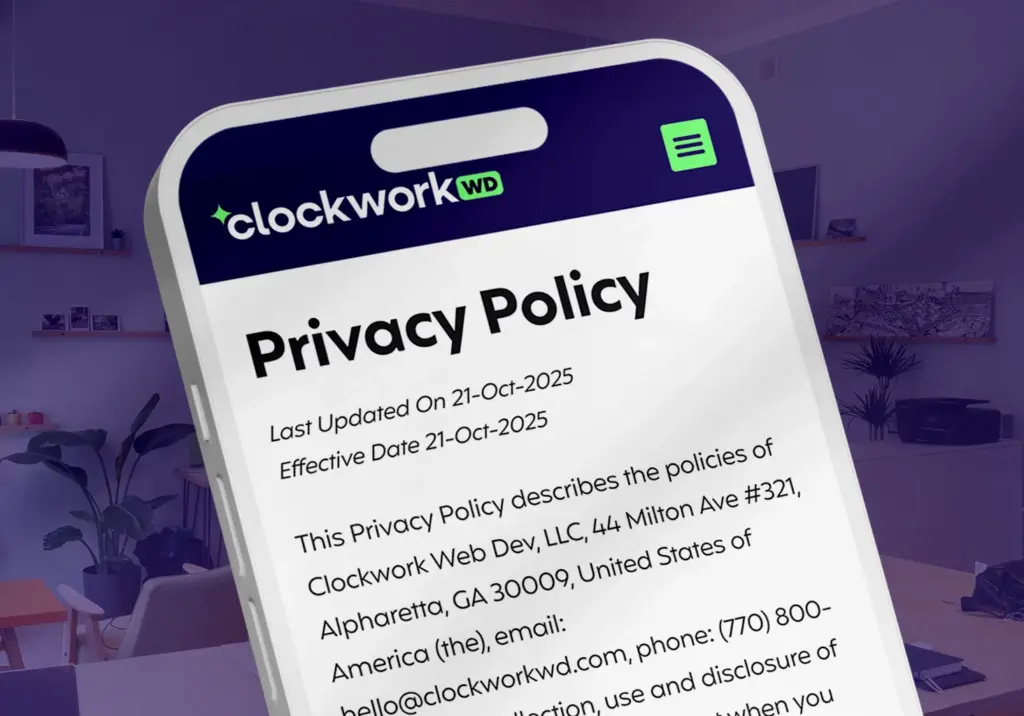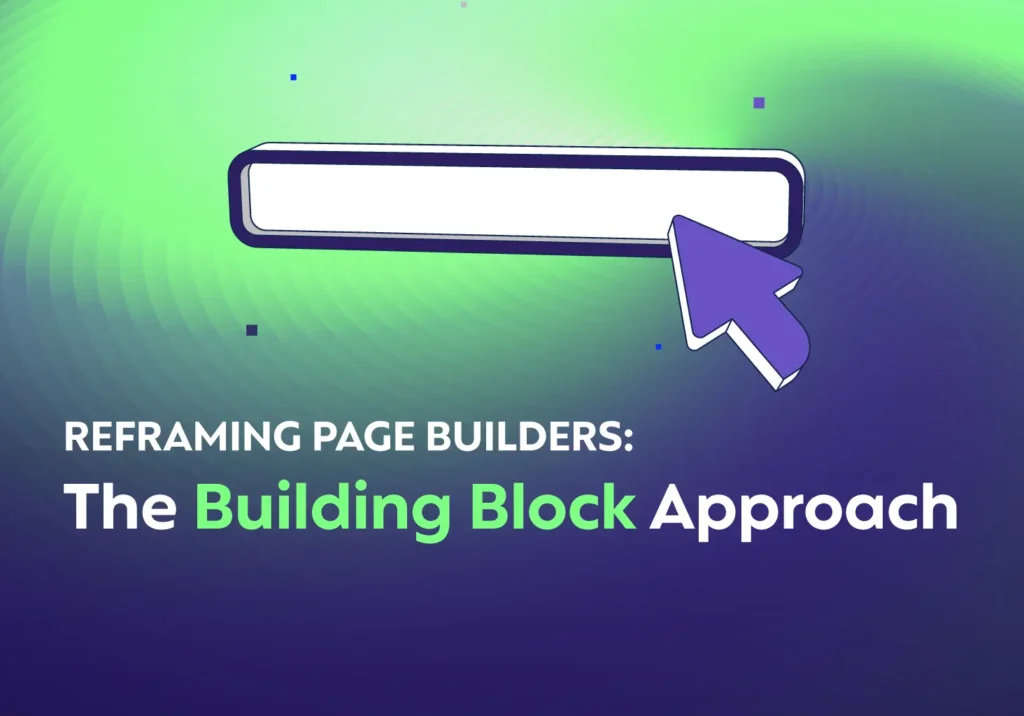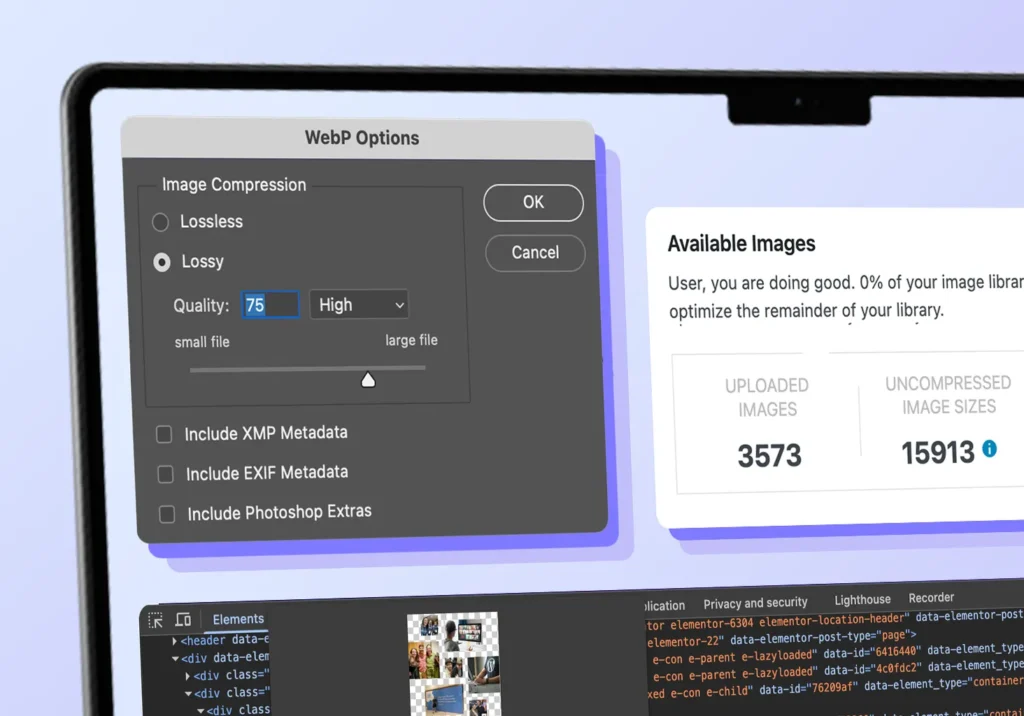As a web designer at Clockwork, I spend my days building websites using WordPress page builders like Beaver Builder and Elementor. These tools are fixtures in the WordPress development world, offering free and premium features, robust third-party support, and the flexibility to handle diverse project requirements. Custom layouts, API integrations, advanced features – both tools can handle almost anything you throw at them.
While there’s a lot to love about Beaver Builder and Elementor, my team and I get a lot of questions about which page builder is better. The honest answer after almost a decade of using them? The best page builder for you depends on what you’re trying to accomplish.
Elementor vs. Beaver Builder: The Short Version
- Elementor – Better for advanced styling and dynamic content
- Beaver Builder – Better for performance and simplicity
- Choose one page builder and stick with it
- Want to skip the learning curve? Our clients get hands-on training
Where these platforms really stand apart is on larger, enterprise-grade projects – like our recent work on the Georgia Department of Education’s (GaDOE) Culinary Hub. I’ll break down what I’ve learned working with both page builders over the years and explain what you can expect.
Understanding Page Builders in WordPress Development
Before getting into specifics, it’s worth noting that both Beaver Builder and Elementor have earned their place in professional WordPress development. Each tool offers things like:
- Flexible, drag-and-drop interfaces
- Premium features for advanced functionality
- Extensive third-party integration support
- Clean, customizable frameworks
- Global styling capabilities
Where these platforms really stand apart is on larger, enterprise-grade projects – like our recent work on the Georgia Department of Education’s (GaDOE) Culinary Hub. I’ll break down what I’ve learned working with both page builders over the years and explain what you can expect.
Elementor: Power and Flexibility for Enterprise Websites
Elementor shines when you need complex, repeatable layouts without writing code. You can create sophisticated product showcases, dynamic team directories, or filterable portfolios using its built-in tools. The visual controls make it easy to adjust everything from typography to hover effects, while the templating system keeps your design consistent.
The Meet the Team section we created for Hancock Askew showcases the power of Elementor’s Dynamic Content and template features. As a 100-year-old accounting firm with a large staff and many moving parts, they needed a solution that could scale and update with ease. We set them up with the template, and they reuse it for each team member, with the styling automatically applied. The drag-and-drop interface means non-developers can add new team members or update existing ones by filling in simple fields in the backend.
Here’s what stands out to me:
- Dynamic Loops lets you create a template once and use it with different content types across your site – perfect for those team directories or case study layouts I mentioned
- You get incredibly detailed styling options for each element, down to positioning and hover states, without touching CSS (the code that styles your website)
- The flex container system takes the headache out of responsive design with easy multi-column layouts that reshape themselves for mobile, adjust spacing automatically, and maintain proper alignment without diving into custom code
- Right-click functionality saves tons of time when you’re duplicating and moving elements between pages
- The live preview feature means you can see your changes instantly, which speeds up both development and content updates
These practical features remove a lot of heavy lifting for web designers. Take something like a portfolio or team directory: one template, saved globally, can automatically showcase different project types while keeping your styling consistent. Put all this together, Elementor is well worth the learning curve for organizations managing a lot of content.
Beaver Builder: Streamlined and Straightforward
Beaver Builder keeps it simple while allowing plenty of room for custom functionality. It delivers reliable, high-performance sites that meet the complex needs of enterprise-level websites. We used this builder for GaDOE’s Culinary Hub because we needed a reliable platform that could handle lots of content managers in the kitchen while staying lightning-fast (and not breaking).
The platform’s backend interface is genuinely a game-changer for workflow efficiency. Its intuitive design allows designers to work seamlessly and empowers content teams to quickly update pages with ease. My team and I especially appreciate the powerful theming capabilities that let us create consistent, eye-catching layouts that the client can apply to any page.
Here’s what makes Beaver Builder stand out:
- The drag-and-drop interface is refreshingly precise – what you see is exactly what you get, with no surprise element jumps or positioning quirks
- Beaver Themer (now included with Starter) lets you design headers, footers, archives, and even WooCommerce layouts without touching code
- Global elements let you apply updates everywhere with a single edit, saving time and effort with reusable content blocks that look top-shelf
- The interface pins where you want it, staying out of your way while you work
- You get a free theme framework that’s optimized for speed and designed to work seamlessly with the builder
We built a one-of-its-kind Menu Matrix that goes far beyond standard page-building capabilities. This custom tool streamlines meal planning at scale, integrating deeply with the site’s infrastructure while maintaining lightning-fast load times and a consistent design.
After just one training session, GaDOE’s content team has been managing this sophisticated, custom-built solution with ease. This demonstrates how Beaver Builder isn’t just a page builder, but a robust platform for creating innovative, high-performance web applications.
Considering Trade-offs: Elementor vs. Beaver Builder
We’ve covered the benefits, so let’s dive into a few limitations of each page builder. Bear in mind we use both in our web design services! The choice truly depends on the project, the complexity of the site’s content, and any specific integration requirements like APIs or third-party tools.
Elementor:
- Usually requires more robust hosting to handle complex builds
- Can experience performance impacts with nested elements
- Takes time to master its extensive feature set
- Take caution when updating to the newest version (always back up your site first!)
Beaver Builder:
- Less equipped for handling deeply dynamic or API-driven functionalities out of the box
- Preview workflow can sometimes slow down content teams
- Less intuitive flexbox setup, requiring some CSS knowledge for responsive layouts.
These limitations highlight how important it is to evaluate your project’s priorities upfront – whether it’s managing dynamic content, optimizing for performance, or ensuring your team can easily handle updates long-term.
Choosing the Best Page Builder (for Your Organization)
For enterprise sites like GaDOE’s Culinary Hub, Beaver Builder’s combination of power and flexibility makes it a top choice, especially when paired with high-performance hosting.
Elementor, on the other hand, works well for projects where advanced design features, custom animations, or highly dynamic content are key. It’s a great choice for visually complex sites, but it does come with a steeper learning curve and hosting requirements.Whatever you choose, the most important step is committing to a builder from the start. Switching halfway through is a costly headache that disrupts timelines and workflows. If you’re unsure, our team can help guide you to the right solution.
Struggling with WordPress Page Builders?
Successful websites require a lot more than just choosing the right page builder. At Clockwork, we make sure your entire user experience design works in harmony:
- Content management workflows
- Team training requirements
- Web performance optimization
- Long-term maintenance
- Security considerations
Ready to see how we bring it all together? Let’s talk about your web design needs.




